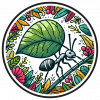Camera CATalogue is a new citizen science project from Panthera, the global wild cat conservation organization, and Zooniverse, a collection of online citizen science projects.
Scientists need your help identifying pictures of African wildlife, including big cats like leopards, lions and cheetahs. You can participate entirely online. It only takes a few minutes to contribute. However, as you may know from surfing pics of internet cats, it’s easy to find yourself absorbed in images for hours. Better still, you can feel good about the time you spend because your identifications will make a difference for Africa’s big cats.
Why Wild Cats?
Camera CATalogue is currently focused on monitoring populations of wild cats in Africa that are at risk due to a variety of threats:
- Leopards are locally extinct in six countries from their home range and possibly extinct in another six. They continue to be threatened by poaching, conflict with local people and poorly managed trophy hunting.
- In just 200 years Africa’s lions have literally been decimated; from a population of 200,000 to only 20,000. They are locally extinct in 26 countries in Africa and, in their remaining range, they are imperiled by poaching, habitat loss and conflict with local people.
- An estimated 10,000 cheetahs remain in the wild. Threatened by conflict with local people, the illegal wildlife trade and a decline in their prey species, they are now locally extinct in 25 countries and may be extinct in 13 more.
In the long run, the Camera CATalogue will expand beyond Africa to cover the big cats of the globe. “We work across many other regions that support big cats,” explains Ross Pitman, Leopard Monitoring Coordinator for Panthera, “so will be including those species programs in the coming 12–18 months.”
Poaching is a danger to all of the cats and many of the other species (like rhinos) that you will see on the camera; that is why you won’t see any specific locations or times associated with the images and the images are never shown in a series to prevent poachers from tracking wildlife through the photos.

Lions. Photo © Panthera
Your observations help Panthera monitor an unprecedented area, large enough to assist in conservation decisions on the ground. They have set up the cameras so that they get an image of each side of the animal, enough to identify individuals of some species by the unique patterns on their coats.
With this information, conservationists can estimate population numbers and by looking at trends from year to year, see if populations are increasing, declining or stable. They will need sustained participation from the citizen science community as they continue to add pictures to the project each year.
Why Do I See Other Wildlife?
You’ve heard of facial recognition software (in fact domestic cats were among the first things Google’s artificial intelligence learned to recognize), however, software can’t yet identify one kind of wildlife vs. another.
That’s why scientists need your help to identify animals in the images, sorting out those that are most relevant to their work protecting big cats for further study by the research team. Crowdsourcing allows the project to sort through thousands of photos relatively quickly so that results arrive in time to make relevant conservation decisions based on trends in the data.

Sometimes you learn about animals you haven’t seen before; sometimes you get a unique perspective of a favorite. Photo © Panthera
Learning to classify the wildlife of the area is fun and the identification tools on Camera CATalogue make it easy. You can narrow down the results by pattern, color, horns, tail, build or what broad category the animal “looks like” from cats to antelope to birds. When in doubt, guess! All photos will be shown to multiple participants and the identifications will be compared, so it’s okay if you get it wrong.
You might even find something fun like a genet riding a rhino’s back. Yes, that’s a real thing that happened!
How Can You Get Involved?
Stop by the Camera CATalogue project page and take the tutorial. In less than a minute you’ll be identifying photos. If you want to track your progress or participate in the discussion forum, you’ll need to sign up for a Zooniverse account.
The forum is a great place to ask a question that isn’t answered by the FAQ or chat about your favorite photos. You can follow the progress of the project on Panthera’s Field Notes blog.
Now time spent looking at cat pictures won’t just improve your spirits, it will also improve the chance that these cats survive and thrive long into the future.
About the Author
Lisa Feldkamp is the senior coordinator for new science audiences at TNC's Cool Green Science. She loves all things citizen science and enjoys learning about everything that goes on four legs, two wings or fins. She has a PhD in Classical Literature and Languages from the University of Wisconsin - Madison and enjoys reading Greek and Roman literature or talking about mythology in her spare time.
This story originally ran on Cool Green Science, the science publication of The Nature Conservancy. The header image on this story is a Leopard selfie on Camera CATalogue, and the photo is © Panthera





Add the first post in this thread.